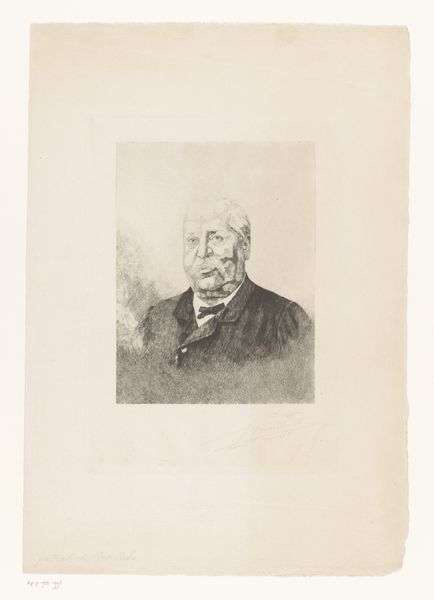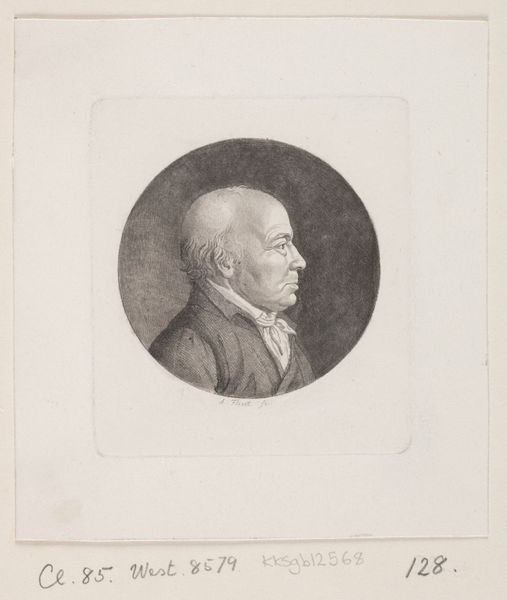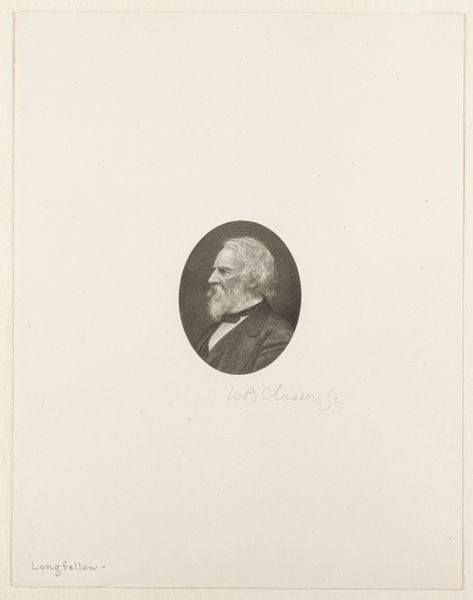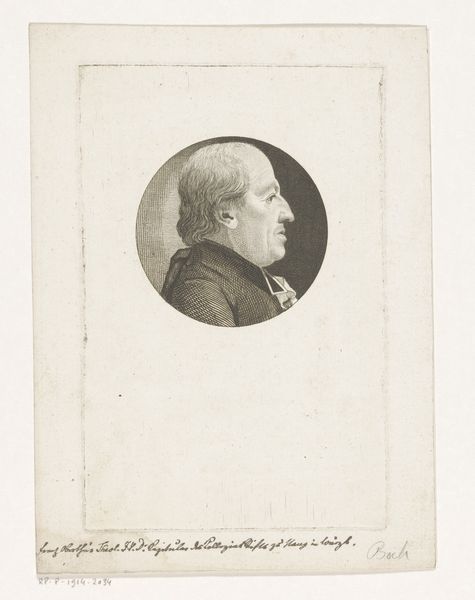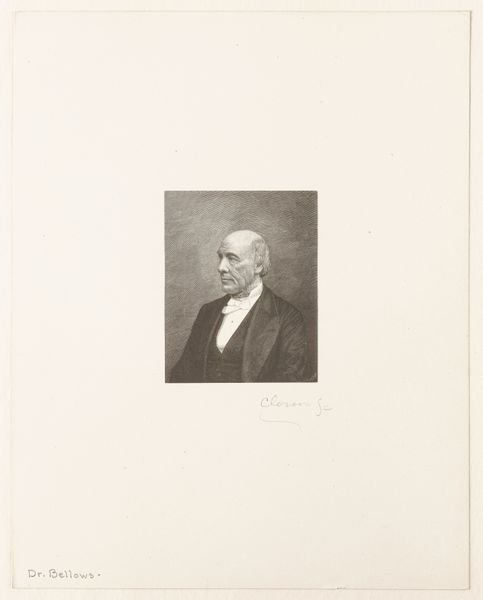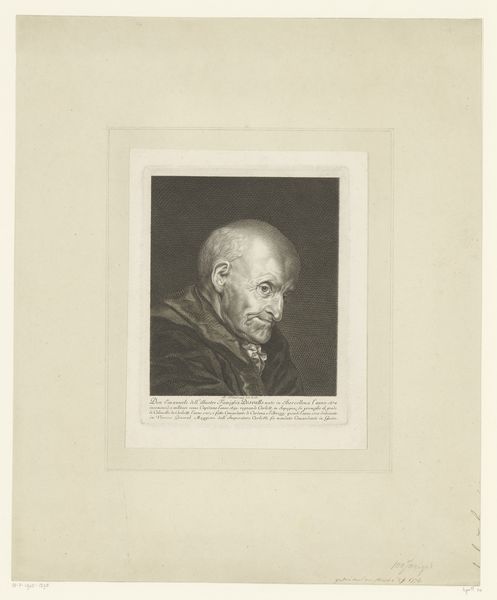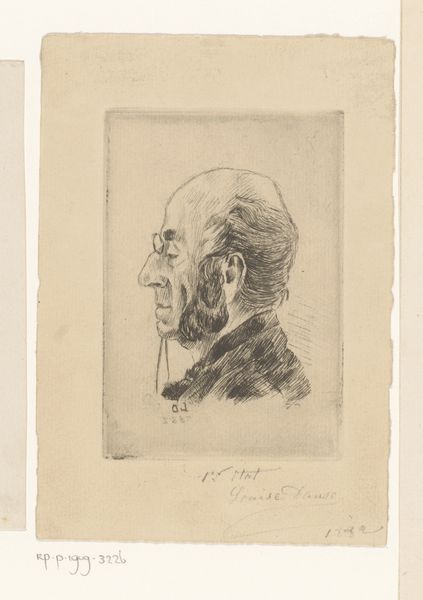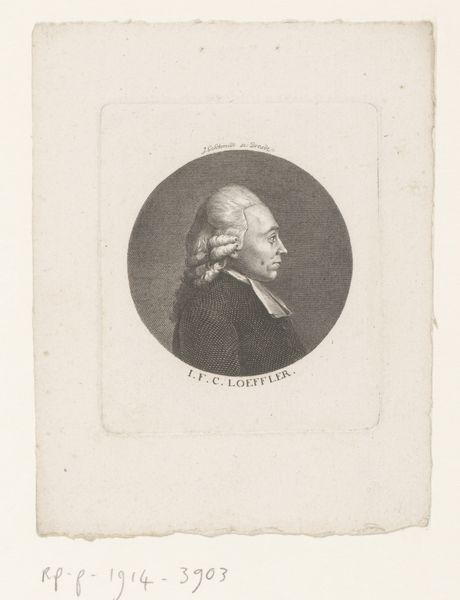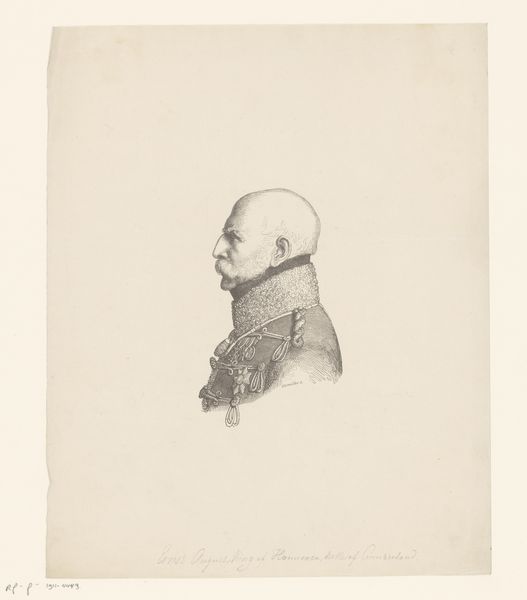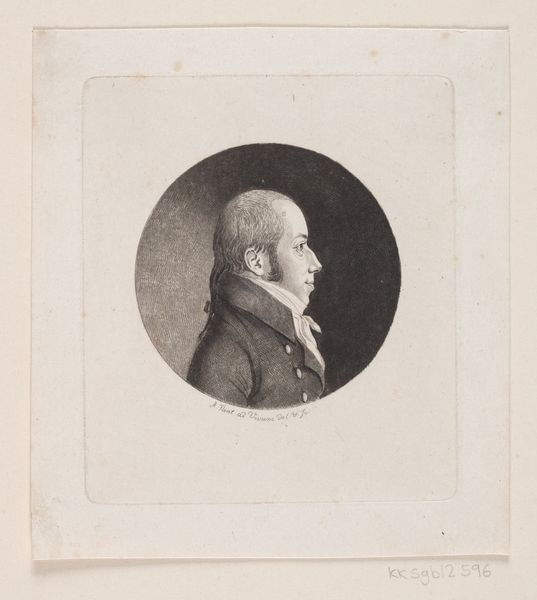
drawing, paper, charcoal
#
drawing
#
paper
#
charcoal
#
academic-art
#
realism
Dimensions: height 383 mm, width 330 mm
Copyright: Rijks Museum: Open Domain
Editor: This is a portrait of Nicolaas Beets, made in 1891 by Jan Veth using charcoal on paper. The shading gives the subject a very solemn air. What stands out to you? Curator: The profile, stark and unidealized, suggests a man of contemplation and perhaps a hint of weariness. But look closer at the button on his jacket, small, but a potent symbol of civic or academic belonging. It suggests his integration into the cultural institutions of the time, doesn't it? Editor: That’s a good point; I missed that at first. Is that something common for portraits of the era? Curator: Precisely. It reflects a period of consolidating national identity, where belonging and contribution were visually codified, even in something as subtle as a button. What psychological weight did those symbols hold then, compared to now? How do you think people interpreted that at the time? Editor: It adds a layer of context, makes him a participant in a larger narrative. The drawing technique too - the charcoal seems very immediate. Curator: The choice of charcoal is significant, lending a certain rawness and immediacy to the representation. Veth avoids idealization, presenting Beets with honesty. What continuities can you draw between this honest approach and artistic practices today? Editor: I hadn’t really thought about how those visual symbols connect to cultural memory before. It definitely enriches my reading of the portrait. Curator: Exactly, by unraveling layers of cultural symbols we can deepen our knowledge and unlock stories within the portrait itself, bridging the past with our present.
Comments
No comments
Be the first to comment and join the conversation on the ultimate creative platform.
